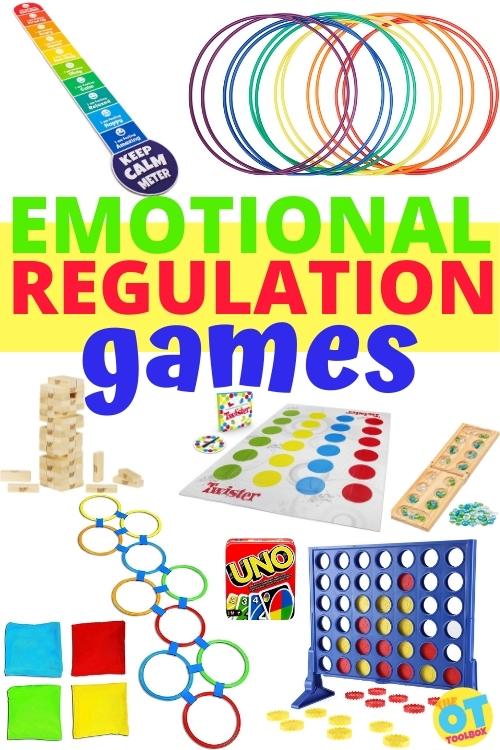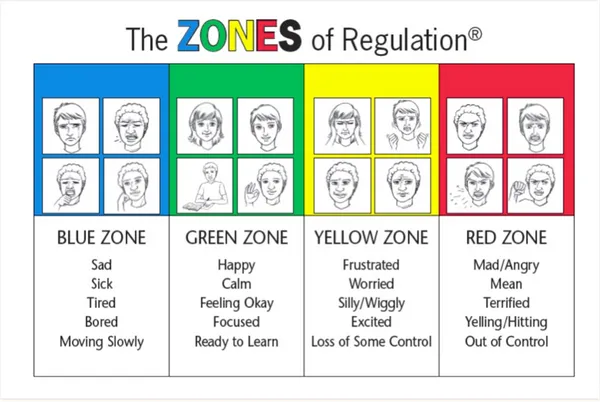Emotional Regulation Occupational Therapy
Emotional regulation plays a crucial role in our overall well-being, especially when it comes to managing stress, anxiety, and other intense emotions. For individuals struggling with emotional dysregulation, occupational therapy offers effective interventions to enhance emotional well-being. In this article, we will explore the concept of emotional regulation in occupational therapy and how it can be applied to promote emotional health. We will also delve into various activities and strategies that can aid in emotional regulation. Let's dive in!
Understanding Emotional Regulation
Emotional regulation refers to the ability to recognize, understand, and manage one's emotions in a healthy and adaptive manner. It involves both the emotional and cognitive processes that enable individuals to respond to challenging situations effectively. Emotional regulation is essential for maintaining mental health, building positive relationships, and engaging in daily activities.
The Role of Occupational Therapy in Emotional Regulation
Occupational therapists are skilled professionals who specialize in supporting individuals in developing appropriate emotional regulation strategies. They utilize evidence-based techniques to address emotional difficulties and promote emotional well-being. By employing a client-centered approach, occupational therapists can identify an individual's unique emotional regulation needs and tailor interventions accordingly.

Using Games to Enhance Emotional Regulation
Games can be a powerful tool in promoting emotional regulation among individuals of all ages. They provide a safe and enjoyable platform to explore emotions, practice self-regulation skills, and learn coping strategies. Here are some popular games that occupational therapists often incorporate into their intervention plans:
- Emotion Charades: This game involves acting out various emotions and allowing others to guess them. It helps individuals enhance their emotional recognition skills and encourages them to express and regulate emotions effectively.
- Feelings Memory Matching: This memory game involves matching pairs of cards with different facial expressions depicting various emotions. By playing this game, individuals can improve their ability to identify and differentiate between different emotional states.
- Social Skills Board Games: Board games focusing on social skills enable individuals to practice emotional regulation within a social context. These games often involve taking turns, cooperating, and managing frustrations, fostering the development of essential emotional regulation skills.

Utilizing Zones of Regulation Charts
The Zones of Regulation is a popular framework used in occupational therapy to help individuals identify and navigate their emotions effectively. It divides emotions into four color-coded zones:
- The Blue Zone: This zone represents low energy states, such as feeling sad, tired, or bored. Individuals in the blue zone may practice relaxation and calming techniques to regulate their emotions.
- The Green Zone: The green zone indicates a regulated emotional state, where individuals feel calm, focused, and content. In this zone, individuals can engage in activities that help them stay in a positive emotional state.
- The Yellow Zone: The yellow zone represents a heightened emotional state, where individuals may feel worried, anxious, or excited. Occupational therapists help individuals identify strategies that can assist them in managing and returning to the green zone.
- The Red Zone: The red zone signifies an intense emotional state, often associated with anger or extreme frustration. In the red zone, individuals may engage in activities to self-regulate their emotions and regain control.
Occupational therapists use Zones of Regulation charts to assist individuals in identifying their current emotional state and selecting appropriate strategies for regulation. These charts are excellent visual tools for promoting self-awareness and emotional management.
FAQs about Emotional Regulation Occupational Therapy
1. What age group can benefit from emotional regulation occupational therapy?
Occupational therapy interventions for emotional regulation can benefit individuals of all ages, from children to adults. The approach and strategies used may vary depending on the developmental stage and specific needs of the individual.
2. How long does it take to develop effective emotional regulation skills?
The time required to develop effective emotional regulation skills varies for each individual. It depends on factors such as the complexity of emotional difficulties, individual motivation, and consistent practice. With the guidance and support of an occupational therapist, individuals can gradually enhance their emotional regulation abilities over time.
3. Can emotional regulation occupational therapy be helpful for individuals with neurodevelopmental disorders?
Yes, emotional regulation occupational therapy can be beneficial for individuals with neurodevelopmental disorders such as autism spectrum disorder or attention-deficit/hyperactivity disorder. Occupational therapists can utilize specialized techniques and interventions to support the unique needs of individuals with these conditions.
4. Are there any self-help strategies for emotional regulation?
While occupational therapy provides valuable guidance and support, there are also self-help strategies individuals can use to promote emotional regulation. These include engaging in regular physical exercise, practicing mindfulness and deep breathing techniques, maintaining healthy sleep patterns, seeking support from trusted individuals, and engaging in hobbies or activities that bring joy and relaxation.
5. Will emotional regulation occupational therapy replace other forms of mental health support?
No, emotional regulation occupational therapy is designed to complement and enhance other forms of mental health support. It provides specific techniques and interventions tailored to an individual's emotional regulation needs. Collaborating with other professionals, such as psychologists or counselors, can offer a holistic approach to supporting emotional well-being.
Emotional regulation occupational therapy offers valuable tools and strategies to individuals seeking improved emotional well-being. Through games, Zones of Regulation charts, and personalized interventions, occupational therapists help individuals build effective emotional regulation skills and enhance their overall quality of life. By fostering emotional health, individuals can navigate life's challenges with resilience and lead fulfilling lives.
Pin On Young Living Essential Oils
 Image Source : www.pinterest.com
Image Source : www.pinterest.com One Of My "must Have" Resources As An Occupational Therapist Is The
 Image Source : www.pinterest.com
Image Source : www.pinterest.com Zones Of Regulation Charts | Emotional Regulation Activities, Social
 Image Source : www.pinterest.co.uk
Image Source : www.pinterest.co.uk Emotional Regulation Strategies & More | Occupational Therapy
 Image Source : www.genphysio.com.au
Image Source : www.genphysio.com.au Emotional Regulation Games - The OT Toolbox (2022)
 Image Source : tonydavilio.com
Image Source : tonydavilio.com EMOTIONAL REGULATION WORKSHOP ONLINE | Learning Challenges
Physical Or Occupational Therapy Self Regulation Activities - Your
 Image Source : www.yourtherapysource.com
Image Source : www.yourtherapysource.com regulation therapy occupational physical yourtherapysource
8 Social-Emotional Learning Ideas | Social Emotional, Social Emotional
 Image Source : www.pinterest.com
Image Source : www.pinterest.com Pin on young living essential oils. 8 social-emotional learning ideas. Emotional regulation workshop online. Emotional regulation games. One of my "must have" resources as an occupational therapist is the